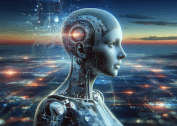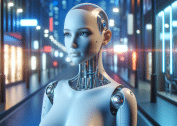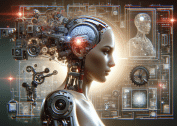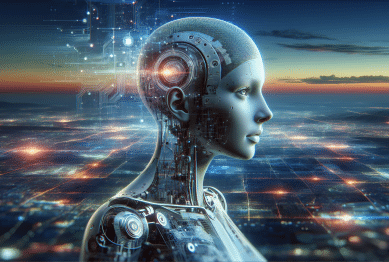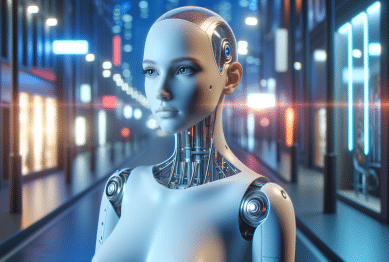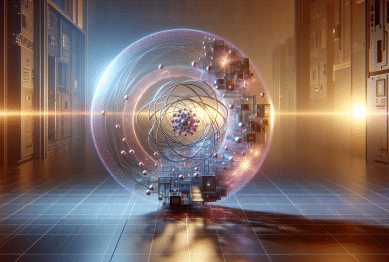Artificial intelligence transforms daily technology in ways that surprise and delight. Explore how AI streamlines routines, supports decisions, brings creativity to life, and quietly powers many tools behind the scenes. Uncover the hidden impact of AI in modern living and what it could mean for you.
AI Changing How Daily Choices Are Made
Whether reading emails, scheduling appointments, or searching for music, artificial intelligence is often at work behind the scenes. Personal assistants such as Siri, Alexa, and Google Assistant offer a glimpse into how AI helps people manage tasks, find answers, and organize calendars with simple voice prompts. This technology, known as natural language processing, lets users interact with devices more naturally. Rather than clicking through menus, you can simply ask a question and get a quick response, making AI feel almost invisible in daily choices. As AI continues to improve, expect more nuanced and useful suggestions in your everyday tools, from maps routing you around traffic to your phone reminding you of tomorrow’s meetings. These are just small hints of a broader transformation quietly happening within our routines.
Recommended content, search predictions, and even smart replies in messaging apps are powered by AI algorithms. Streaming platforms like Netflix, Spotify, and YouTube deploy machine learning to interpret your watching or listening habits and suggest relevant content you might enjoy. Over time, these algorithms adapt to your changing preferences and habits, making the experience feel increasingly personalized. For many people, this invisible AI presence means less effort spent searching—recommendations appear tailored to unique interests, all with minimal input required.
Sometimes AI’s subtlety leads to breakthroughs in convenience. Smart homes use AI-driven systems that learn when to turn on lights or adjust the thermostat, often saving energy and supporting comfort. Wearables analyze heart rate data and remind users when it’s time for a walk or a rest. In cars, AI-powered navigation and safety alerts help travelers reach their destinations more efficiently and avoid hazards. These decisions, automatically made by AI, collectively create more efficient, responsive, and supportive environments that improve quality of life day by day.
Personalized Experiences in Media and Shopping
Browsing a favorite online store or streaming the latest show may feel simple, but it’s AI operating quietly in the background that enhances the experience. Retailers employ machine learning to suggest products tailored to shoppers’ recent searches and purchase behaviors, creating unique storefronts for every visitor. Personalized recommendations increase satisfaction and engagement, driving interest toward items that fit an individual’s tastes or needs. These data-driven features are not limited to sales; they also support accessibility, adjusting website layouts or reading text aloud for those with specific preferences or disabilities.
Media platforms leverage advanced algorithms to curate music, films, and articles that align with a user’s profile. News feeds adapt based on reading history, highlighting stories from trusted sources or favorite subjects. Meanwhile, music and video platforms combine behavioral analysis with collaborative filtering to craft playlists or suggest videos, saving users from endless scrolling. AI’s role in content curation not only boosts engagement but also ensures that users are constantly exposed to fresh and relevant perspectives, expanding learning and entertainment horizons.
For creators, advanced AI tools offer new ways to reach audiences. Video editors and graphic designers now rely on AI to automate time-consuming processes such as background removal, color correction, and even style imitation. Writers and marketers access AI-generated prompts, headlines, or tailored suggestions for blog content. By automating repetitive elements, AI frees up creative energy for higher-level innovation. For individuals and businesses alike, these capabilities open the door to compelling content sharpened by technology’s precision and foresight.
Supporting Health and Wellness Through Smart Technology
Wearable fitness trackers and health apps are perhaps the most relatable faces of AI-driven innovation in personal wellness. Sensors embedded in wearables collect data such as heart rate, steps taken, sleep quality, and activity levels. AI-driven algorithms then interpret this data, generating insights and personalized recommendations to help users achieve fitness goals or maintain healthy habits. Some platforms let you log meals, monitor mood, and even predict stress patterns, offering guidance on when to rest, hydrate, or push harder. The combination of subtle prompt and nuanced personalization keeps users engaged with managing their well-being more proactively.
Healthcare providers increasingly embrace AI in clinical settings. Algorithms now assist with interpreting diagnostic images, predicting treatment outcomes, and even identifying early signs of illnesses. Virtual health assistants help schedule appointments and follow up on medication, reducing administrative hurdles while supporting patient autonomy. By pre-screening questions and analyzing trends, AI can highlight changes that deserve medical attention, potentially speeding up care, or catching issues sooner (Source: https://www.nibib.nih.gov/science-education/science-topics/artificial-intelligence-healthcare).
AI’s role isn’t limited to fitness tracking or diagnostics. Mental wellness apps use conversational AI to support users through challenging emotions or stress. Some platforms facilitate meditation, offer coping strategies, or check in on mood over time. As telehealth becomes more commonplace, AI-driven chatbots and virtual providers act as the first point of contact, offering triage and educational resources. This democratization of knowledge bridges healthcare gaps and lets individuals take a more active role in managing their overall mental and physical health.
Efficiency Gains in Work and Study with AI Tools
The professional world sees remarkable evolution as AI powers productivity suites, smart scheduling, and streamlined communication. Email categorization, fraud detection in finance, and automated report generation all rely on advanced AI models. Business leaders harness AI to analyze sales, predict market trends, or optimize inventory. These tools lessen mundane or repetitive work, freeing employees to focus on creative and strategic challenges. The impact is widespread, from small teams using AI to organize meeting notes to major companies reimagining entire workflows.
Students and life-long learners benefit from adaptive software that personalizes quizzes, reading materials, and feedback based on performance data. AI-driven tutoring platforms assess strengths and weaknesses, recommending areas for additional study. Some universities use predictive analytics to identify students at risk of falling behind and intervene early, supporting better graduation rates (Source: https://www.ed.gov/oii-news/artificial-intelligence-transforming-education). In conference rooms or classrooms, transcription tools powered by AI instantly convert speech to written notes, making information accessible and easy to share.
Collaboration with AI encourages experimentation. Creative brainstorming software suggests new angles or questions. Coding assistants help debug or complete code, saving time and reducing frustration. These enhancements foster a supportive and dynamic environment for growth, innovation, and teamwork. As AI applications continue to diversify, individuals and teams will likely adopt new ways of working, exploring, and learning in every corner of professional and academic life.
AI Powering Creativity and Artistic Expression
Music composition, digital painting, and novel writing now see AI as a creative partner. AI doesn’t replace artists but enhances potential by generating ideas, styles, or full arrangements from text prompts or sketches. Visual artists experiment with generative adversarial networks (GANs) to create novel images or reimagine existing works with unique flair. In literature, AI-powered language models aid plotting, suggest dialogue, or co-create poetry, blending human intuition with computational novelty (Source: https://mitadmissions.org/blogs/entry/using-ai-for-art-and-creative-work/).
Several tools now enable non-experts to engage in creativity they once considered inaccessible. Easy-to-use AI platforms let anyone design logos, create music beds for podcasts, or generate illustrations for school projects. These tools frequently require little technical skill; users select styles, enter ideas, or choose from templates, and the underlying AI produces polished results. For businesses, AI-generated graphics power personalized marketing. For educators, custom visuals make learning more engaging.
The boundary between creator and audience blurs further with interactive AI. Apps now offer stories or games that adapt based on user choices in real time. Virtual reality and augmented reality experiences tailor scenes and characters according to preference or learning goals. These dynamic projects challenge traditional roles and open opportunities for collaborative, immersive, and playful creativity, supported by AI’s adaptability and user-centric focus.
Ethical Considerations and Privacy in Everyday AI Use
AI’s silent efficiency can obscure important questions around data protection, fairness, and transparency. When AI interprets conversations, purchase history, or health data, the quality and security of stored information become crucial topics. Many experts highlight the importance of explicit consent and strong data encryption to prevent misuse (Source: https://www.nist.gov/artificial-intelligence). Transparent policies and user controls help people understand what is collected, how it’s used, and how to make informed choices about their digital footprint.
Organizations developing AI systems must diligently test for bias. Machine learning models trained on unbalanced data can reinforce stereotypes or make incorrect assumptions about individuals. For example, facial recognition technology has sparked debate due to accuracy disparities among different demographic groups (Source: https://www.nap.edu/read/25387/chapter/2). This concern underscores the need for ethical guidelines and regular audits, promoting technology that serves and respects diverse users.
Legislation and advocacy groups support responsible AI. Regulatory frameworks are developing worldwide to safeguard against misuse, shape responsible deployment, and hold organizations accountable (Source: https://ico.org.uk/for-organisations/guide-to-data-protection/key-data-protection-themes/artificial-intelligence/). Many experts predict continued progress in privacy standards, bias reduction, and transparency, allowing users to benefit from AI while knowing their rights and well-being are protected.
References
1. National Institute of Biomedical Imaging and Bioengineering. (n.d.). Artificial Intelligence in Healthcare. Retrieved from https://www.nibib.nih.gov/science-education/science-topics/artificial-intelligence-healthcare
2. U.S. Department of Education. (n.d.). Artificial Intelligence Transforming Education. Retrieved from https://www.ed.gov/oii-news/artificial-intelligence-transforming-education
3. MIT Admissions. (n.d.). Using AI for Art and Creative Work. Retrieved from https://mitadmissions.org/blogs/entry/using-ai-for-art-and-creative-work/
4. National Institute of Standards and Technology. (n.d.). Artificial Intelligence. Retrieved from https://www.nist.gov/artificial-intelligence
5. The National Academies Press. (n.d.). Artificial Intelligence: Emerging Opportunities, Challenges, and Implications. Retrieved from https://www.nap.edu/read/25387/chapter/2
6. Information Commissioner’s Office. (n.d.). Artificial Intelligence. Retrieved from https://ico.org.uk/for-organisations/guide-to-data-protection/key-data-protection-themes/artificial-intelligence/


